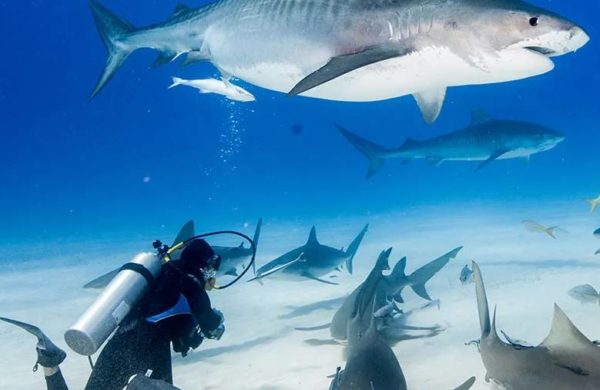
A live shark swimming through Florida’s waters is about 200 times more valuable than a dead shark, a new study has found.
The study, commissioned by the nonprofit Oceana in its bid to end the gruesome shark fin trade, found that divers hoping to see sharks produced more than $221 million in revenue for the state in 2016 and helped supply over 3,700 jobs. That compared to just over $1 million generated by the buying and selling of shark fins nationwide.
The study, Oceana said, is the first of its kind in the U.S. to try to calculate what conservationists have long argued about many imperiled fish: they’re worth far less on a plate than they are in the water.
Sharks are in trouble and one of the reasons they are in trouble is because of the demands for their fins.
Oceana campaign Director Lora Snyder
“Sharks are in trouble and one of the reasons they are in trouble is because of the demands for their fins,” said Oceana’s campaign director, Lora Snyder.
Oceana is hoping the findings help persuade lawmakers to pass a nationwide ban on buying and selling shark fins, a trade centered in Asia but executed globally and blamed, along with longline fishing and overfishing, with driving down shark populations. Earlier this month, California Republican Rep. Ed Royce, chair of the House Foreign Affairs Committee, reintroduced a ban that has so far gained 35 bipartisan signatures, Snyder said.
The U.S. bans shark finning, the process of chopping the fins off sharks and tossing them overboard, still alive, to sink and suffocate or get eaten by predators. Only 11 states prohibit importing and selling fins.
11
The number of states that currently ban the buying and selling of shark fins
“It’s important to know, once a fin has entered the market, did it come from an endangered shark or was that fin legally finned and got in the U.S.?” Snyder said. “Once it’s here, there’s really no way to know.”
To come up with the numbers, wildlife consultant Tony Fedler contacted 365 dive operators across the state and got responses from 237. Nearly all were small businesses. Only 42 qualified as large, with clients that included cruise ships or other tours. Fedler found that nearly one third of divers look for outings where they’ll likely spot sharks and one in five specifically look for encounters with sharks.
Fedler noted an obvious weakness in his study: the data was voluntarily supplied by dive operators who support shark conservation. However, he also pointed out that the total number of dive days he used to calculate his numbers is well below estimates by the Diving Equipment & Marketing Association, making his count more conservative. He also used expense data from a 2001 study which likely low-balled how much divers spend.
Still, dollars from dives clearly outpaces any revenue generated by the fin trade, Snyder said.
“As long as sharks remain alive in the ocean,” she said, “divers and their dollars will continue to support local economies.”



